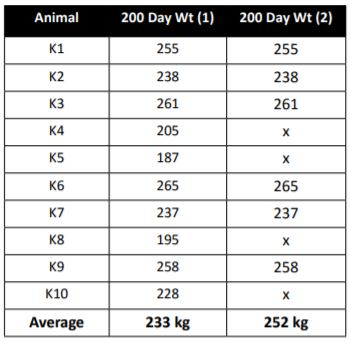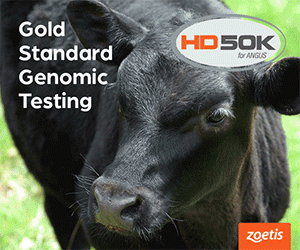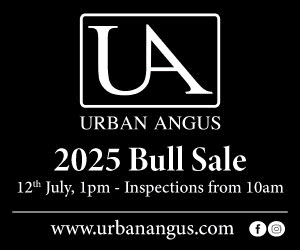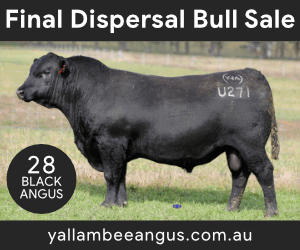Common Performance Recording Problems
The term “rubbish in – rubbish out” is often used when discussing the requirements of performance recording with the TransTasman Angus Cattle Evaluation (TACE). In other words, the reliability of the Estimated Breeding Values (EBVs) that are produced for the animals in a seedstock herd is a direct reflection of the reliability (or quality) of the information that is submitted to Angus Australia.
The reliability of performance information is influenced by many factors, with the accuracy of the measurements that have been collected and/or the submission of false information by dishonest breeders often being the first things that spring to mind.
In reality however, the majority of performance
quality problems are caused by the submission of performance information that is simply of limited use for genetic evaluation.
This fact sheet outlines some of the most common issues that cause seedstock producers problems when performance recording with Angus Australia. Importantly, the steps that seedstock producers can take to avoid these problems are also detailed.
Careful consideration of this information allows seedstock producers to take a large step towards ensuring that they are maximising the returns from their investment in performance recording, and in turn, the reliability of the TACE EBVs that they are obtaining for their animals.
A considerable number of performance recording problems stem back to inadequate planning (or inadequate priority) being given to the performance recording requirements of a seedstock herd.
In this scenario, little planning goes into the management of the herd so that the value of any collected performance data is maximised.
Herds will often not record the required performance, will record performance information in an ad hoc manner and in a lot of situations, any performance information that is recorded is largely an afterthought.
In layman’s terms, these herds may be classed as “reactive” or “casual” performance recorders.
Solutions
- Become a “proactive” performance recorder.
- Incorporate the collection of performance information into the standard management of your herd.
- Plan data collection ahead of time.
- Submit data to TACE shortly after data collection.
While it is possible to generate “reliable” EBVs from pedigree information and performance that has been recorded for correlated traits, generally speaking EBVs will be of lower reliability if animals haven’t been directly recorded for the trait of interest.
Problems often occur when seedstock producers don’t adequately record the traits of importance within either their breeding objective or the breeding objective of their clients.
Solutions
- Record all traits that are important to either you or your clients.
- Do not rely on pedigree and minimal trait recording to generate EBVs that will be used in making selection decisions.
Genetic linkage across contemporary groups both within a herd and between different herds is of fundamental importance in allowing the generation of TACE EBVs. Unfortunately, some common management practices can reduce genetic linkage significantly.
Such management practices include:
(i) Within herd
Completely replacing all sires from one joining season to the next.
Managing the calves from one sire differently to all other calves before recording any performance information.
Not mixing cows after joining.
All ET calves being by the same sire (and dam).
(ii) Across herd
All sires used in the herd having no performance recorded progeny in any other herds (for a range of traits).
AI calves in a herd being born at a separate time to those calves from natural matings.
Poor genetic linkage can cause significant performance recording problems.
Solutions
- Do not replace all sires from one year to the next so that across year comparisons can be made.
- Use sires that have progeny recorded for a range of traits in other herds.
- Mix cows after joining, particularly AI females.
- Manage calves by a range of sires together until after the key performance traits have been recorded.
- In ET programs, try to have a range of sires represented.
- Ensure calves from an AI program are born at a similar time to naturally conceived calves by your home bred sires.
There are now a considerable number of seedstock producers using embryo transfer within their breeding program. While TACE has the ability to analyse the performance of embryo transfer calves, inadequate recording of recipient dam information or use of recipient dams of different breeds often results in performance recording problems.
Importantly, the amount of information available on the recipient dam determines how TACE uses the performance information of each ET calf.
Solutions
- Use recipient dams that are all the same breed when running an ET program.
- Ensure adequate recipient dam information is recorded with Angus Australia for each ET calf (i.e. tag no., specific breed and year of birth).
- Ideally, use “known” recipient dams. This includes recipient dams that have been used in previous ET programs or alternatively, stud cows that have TACE EBVs available (especially Milk EBVs).
As part of the ongoing verification of the performance information that is collected, TACE checks the variation in performance records between animals within each contemporary group.
While a certain degree of variation is expected within each group, when the difference between a performance record for an animal and the average of all animals in that contemporary group is greater than expected, the record for the animal is flagged as an outlier.
Each time an “outlier” is identified, an outlier report is produced and included as part of the herd’s exclusions report. This report gives the breeder the opportunity to correct or verify the performance for the “outlier” animal. If Angus Australia receives no response to the outlier report, the outlier records are excluded from all future TACE analyses.
Ignoring outlier reports is a common cause of performance recording problems.
Solutions
- Pay attention to all information that you receive from the Angus Australia office.
- Verify/correct all outlier reports as soon as you receive them in the mail. If you are in any doubt, contact staff at Angus Australia for advice.
Although the TACE analysis is a very complex analytical model, the basic mechanism by which it works is to directly compare the performance of an animal with the performance of other “similar” animals within the same contemporary group.
Where only a small number of animals are represented in a contemporary group, there are only a few “similar” animals to which it’s performance can be directly compared and thus the performance submitted for it cannot be used effectively by the TACE analysis.
Small contemporary groups are a problem frequently experienced by smaller herds and without careful management, can result in considerable performance recording problems.
Solutions
- Restrict calving periods. A calving period of 6 to 8 weeks is optimal.
- Run as many calves as possible under the same management conditions.
- Weigh all animals in a management group on the same day.
- If a management group has to be split, weigh all calves before splitting the group e.g. all males before they are castrated.
- Create management groups based on “automatic” criteria e.g. sex, prior management groups, prior weigh dates.
- If you have a commercial herd of similar breed content to your stud animals, it may also be possible to record these animals with Angus Australia.
- In the situation where two herds run their animals together on the same property, set up an associate membership with TACE.
- Consider the use of genomic testing to complement any performance information that is collected.
In the same way that it is important to have more than one calf represented in each contemporary group, it is also important to have the progeny from more than one sire represented within each contemporary group.
When all calves in a contemporary group are by the same sire, there are no other calves by other sires to which the performance of these calves can be directly compared. In this manner, the performance submitted for those calves cannot be used effectively by the TACE analysis to calculate the EBVs of their sire.
Single sire contemporary groups are a problem that can be experienced by herds of all sizes and without careful management, can result in considerable performance recording problems.
Solutions
- Use more than one sire in each particular joining.
- Mix cows after joining.
- Consciously manage the herd so that more than one sire is represented in each contemporary group.
Significant problems can arise when only selections of animals in a contemporary group are performance recorded. For example, only the performance for the best animals in the contemporary group is submitted to Angus Australia.
In this situation, the performance information for an animal will only be compared with the “selection” that has been recorded. If this “selection” is not an accurate reflection of the entire contemporary group, then TACE cannot make adequate comparisons and the EBVs produced may be biased or misleading.
The table below provides an illustration of the problems caused by selective recording.

The problem caused by selective recording is demonstrated if we consider animal K7. In the first scenario, all 10 calves in the contemporary group have been recorded and K7 is 4 kg heavier than the average of the group (237 kg v’s 233 kg). This is an accurate reflection of how this animal ranks compared to his peers.
However, in the second scenario, the weights for the lightest 4 calves have not been recorded. K7 is now 15 kg lighter than the “average” of the group (237 kg v’s 252 kg). The selective recording of this group has resulted in the performance of K7 being compared against a misleading average. As TACE can only calculate EBVs based on the information that has been recorded, the subsequent EBVs that are calculated from this performance will also be misleading (i.e. biased).
Solutions
- Adopt a whole herd recording strategy.
- Record all calves with Angus Australia.
- Always record performance for all calves in a contemporary group and submit this performance to Angus Australia.
- Record performance on all available animals (i.e. heifers, bulls & steers, rather than just bulls).
As identified in “Problem 6”, one common problem encountered is the separation of calves into isolated contemporary groups of only one or two animals (thereby virtually eliminating those calves from any comparison with their peers). While this is a problem in itself when calves are managed in small groups, issues can also arise when calves are part of a large contemporary group but their performance is analysed in small contemporary groups by TACE.
The common cause of this problem is the submission of many different management groups – even though calves are being run as part of the one large contemporary group.
Solutions
- Understand the criteria that automatically form contemporary groups in TACE (e.g. herd, calving year, sex).
- Only submit management groups for non-genetic factors (e.g. sick animals, animals run under different conditions).
TACE analyses cattle in contemporary groups to take out the influence of as many of the nongenetic effects as possible (e.g. feeding, years, seasons). The underlying principle is that only animals that have had an equal opportunity to perform are directly compared together within each contemporary group.
If the contemporary groups are not correctly formed, the EBVs calculated will be less accurate and possibly misleading. Most of the problems that breeders encounter in “believing” their TACE EBVs can be traced back to incorrect management grouping. Poor management grouping will result in TACE not being able to differentiate between calves that have had different levels of management or feeding.
Solutions
- Understand the importance and role of management groups.
- Provide management groups for those animals that have been treated differently to their peers and have performed differently due to the non-genetic factors.
- If you are in any doubt, contact staff at Angus Australia for advice.
While not directly associated with performance information, one of the most common causes of problems with TACE EBVs is inaccurate pedigree information.
Even with a concerted effort to record accurate pedigrees, many situations can compromise the accuracy of pedigree information, including:
- In a naturally joined single sire joining mob there is always a possibility of another bull (known or unknown) mixing with the mob at some stage.
- Artificial breeding technologies can add considerable source of errors, particularly if the backup bull is put in soon after the AI program and there is not be a clear break in calving between the AI calves and calves sired by the backup bull.
- “Mothering up” cows and calves may be compromised by mismothering, particularly in first calf heifers.
- Human error when recording the mating details either from natural or artificial breeding programs.
Solutions
- Pay particular attention to recording pedigree information as accurately as possible.
- In situations where pedigree is unclear, consider the use of DNA parentage verification as a way of accurately determining animal parentage.
Collecting carcase measurements via live animal scanning when animals are not in adequate condition is a common problem experienced by seedstock members, especially when scanning yearling bulls.
When animals are scanned when they are not in adequate condition (i.e. they are too lean), the usefulness of the fat depth and IMF measurements is considerably reduced. In particular, very little variation is observed between animals for these traits, plus the ability of the scanning machines to accurately measure IMF decreases significantly when low levels of IMF are present.
In these scenarios, scanning is of little benefit as a means of identifying animals that are genetically different for fat depth and IMF%.
Solutions
- Ensure animals are in adequate condition at the time of scanning.
- As a rough guide, animals would be considered to be in adequate condition if they have a minimum average rump fat depth of 4 – 5mm (or average rib fat depth of 3mm) and the majority of animals have more than 2% IMF when scanned.
- Scan heifers as well as bulls.
Click here to print
Angus Australia acknowledges the funds provided by the Australian Government through the Meat & Livestock Australia Donor Company (MDC).
This resource was created as a result of a collaboration between Angus Australia and Meat & Livestock Australia Donor Company (MDC) (Project P.PSH.1063).






